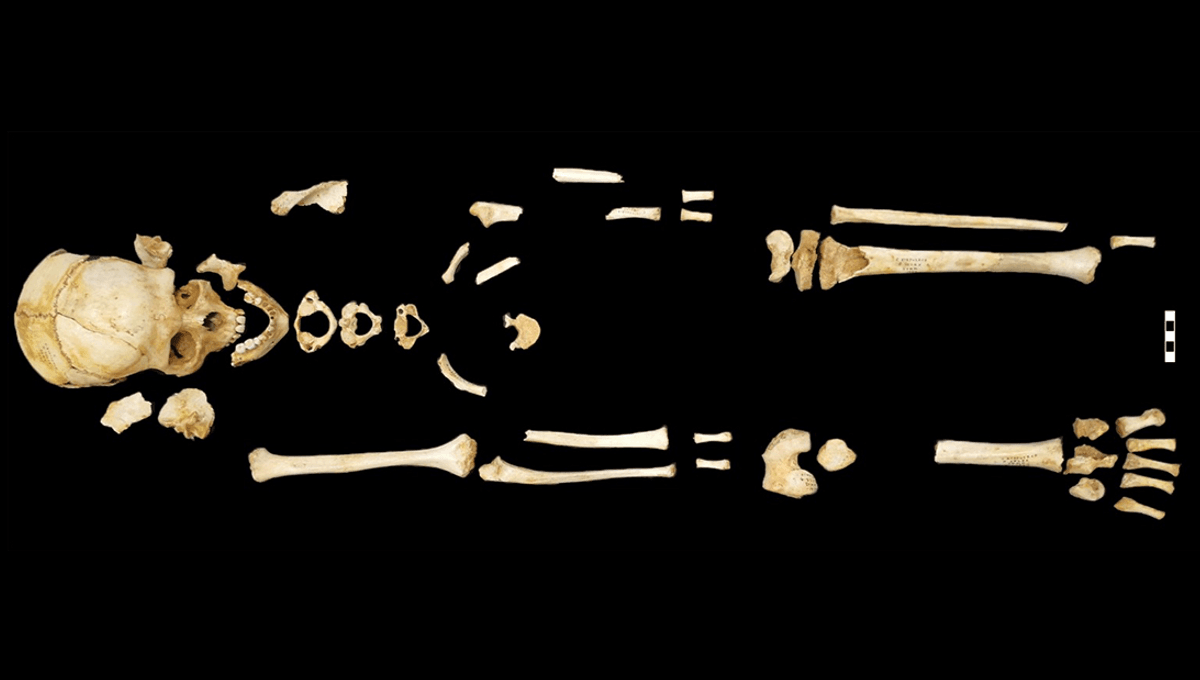
One of the oldest burial chambers in the Iberian Peninsula has been identified in a cave in northern Spain, with bones from within the pit dated to over 7,000 years ago. Representing some of the earliest Neolithic human remains ever discovered in the region, the find provides a rare insight into the funerary customs of the period.
Discovered in 1972, the Galería del Sílex cave was originally believed to have been occupied during the Bronze Age, around 3,000 years ago, when at some point the entrance was sealed, its occupants locked inside a “time capsule” awaiting discovery, which happened in 1979. More recently, however, after noticing six Neolithic ceramic vessels lying alongside human bones in one of the pits, researchers decided to reassess the age of the remains.
Radiocarbon dating conducted on four bones belonging to three separate individuals revealed that the site was used as a burial chamber for a period of about 3,000 years. The oldest of the remains, a female who died around 13 or 14 years of age, was dated to over 7,000 years ago, while the most recent appears to have been interred approximately 3,450 years ago.
Originally, it was thought that the remains found in the part of the cave system known as Sima B were intentionally placed as they were found on a vertical protrusion, while remains found in Sima A were found at the bottom of the cave, which could indicate these individuals fell and died there. However, new research has shown that the bones of the young girl known as I-5 were not anatomically connected as some of the other remains were.
“Additionally, the six ceramic vessels that were recovered from the depths of Sima A, attributed to the Early Neolithic are compatible with the date we obtain for I-5. Thus, it is reasonable to believe that the aforementioned fragments of vessels were deliberately deposited in Sima A, together with the partial remains of I-5,” the authors write.
This means that the Galería del Sílex was in use from the Early Neolithic all the way through to the Bronze Age. Fascinatingly, the oldest bones at the site, the teenage girl’s, predate the emergence of Neolithic funerary traditions in Iberia by about 1,000 years.
And while some scholars have debated the function of the cave, the study authors provide compelling evidence that it was indeed used as a burial chamber. “The human remains from Galería del Sílex were not found within a domestic context of human occupation of the cave, but rather within two pits (simas) located more than three hundred meters [984 feet] from the ancient entrance,” they write.
“This suggests that Galería del Sílex could have been an area reserved for depositing deceased humans during the Early Neolithic.”
In classifying the cave as a funerary space, the researchers are able to paint a picture of prehistoric life – and death – in the Sierra de Atapuerca, where the site is located. Noting that the region’s two other notable Neolithic sites – known as El Portalón and El Mirador – were used as living quarters and livestock stables respectively, the study authors are able to present new insights into the spatial dynamics of Stone Age settlements.
Overall, they say that their work “highlights a unique set of occupations in Sierra de Atapuerca during the Early Neolithic, in which the use of different caves was specialized for different purposes: occupational in El Portalón, livestock exploitation in El Mirador, and funerary in [Galería del Sílex].”
The study is published in the journal Quaternary Science Reviews.
Source Link: “Time Capsule” Cave Reveals Funerary Ritual Dating Back 7,000 Years